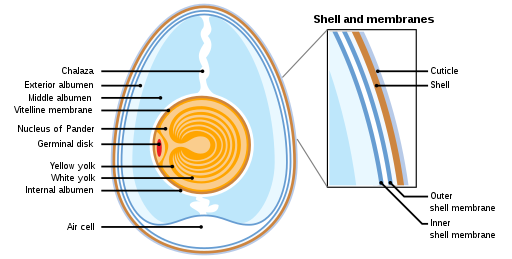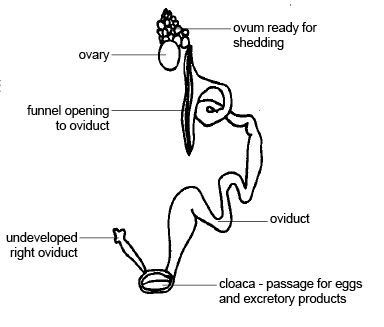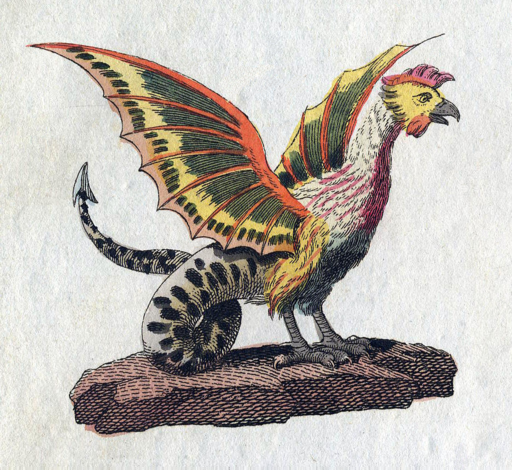What Sorcery Is THIS? A Tiny Egg Just Popped Out Of My Chicken!
Well, we are currently down to one laying hen on the Sustainably Yours Homestead. Out of the 6 chickens that we raised to adulthood in our introductory flock, 3 of them turned out to be roosters. But, one of our hens, Goldy, has gone broody. She is currently sitting on a clutch of about 12 eggs, and we are eagerly waiting for them to hatch; however, that left us with only 2 layers. Then, my favorite hen, Crowe, was killed by a predator leaving us with Ana as our sole source of eggs. Fortunately for us, she is a very consistent (almost daily) layer.
On a recent trip out to the coop to collect her little offering, I was surprised to find the tiniest egg ever. It was closer to the size of a quail egg than a chicken egg!

Original Image
I had never seen such a small egg come out of a chicken, and curiosity got the better of me, so I had to do some research. I found that the phenomenon was not at all out of the ordinary and that there wasn’t anything to worry about as far as the health of my chicken was concerned. I also learned that there is a lot of cool science and folklore behind these miniature eggs. I was both fascinated and entertained; enough so that I was inspired to sit down and compile my findings.
The Science
Before we can fully understand what causes an egg to form without a yolk, we have to understand how the female chicken reproductive system works.Where female humans usually have two functioning ovaries, female chickens generally only have one. They do begin the development of two ovaries at conception, but once the hen hatches, her right ovary will cease development, so every egg that she ever lays will come from her left ovary. Furthermore, every egg cell that she will ever produce will be present when she hatches. They will appear as thousands of tiny white disks less than 5 mm in diameter. Each disk, known as a blastodisc, is encapsulated within a follicle in the chicken’s ovary.

Image Credit:Base bitmap by de:Benutzer:Horst FrankSVG by cs:User:-xfi-Text removed by User:KjoonleeBitmap version: Vkkodali (talk)Translatable vector version: Whidou [CC BY-SA 3.0 (http://creativecommons.org/licenses/by-sa/3.0/)]
The chicken egg that you know and love to have for breakfast starts out as one of these single haploid cells. At some point, the tiny follicles that contain them will begin to grow and develop, but they grow at different rates. Some begin before others. Some grow faster than others. But, once the follicle reaches 6-8 mm in diameter, it will be chosen as the next egg. Then, the ovary begins to lay down interspersing rings of white and yellow yolk that the developing embryo will use for nourishment if the blastodisc is fertilized. They yellow yolk is high in fat content, while the white yolk is higher in protein. Once yolk development has finished, the follicle will rupture, and the yolk will enter the oviduct.

Image Credit:Sunshineconnelly at en.wikibooks [CC BY 3.0 (https://creativecommons.org/licenses/by/3.0)]
The Infundibulum
The first part of the oviduct is a 3-4 inch long section called the infundibulum. If you just look at the diagram, you can see where it gets its more common name, the funnel; but, you may (like me) make the false assumption that it has that funnel shape so that it can catch the yolk once the follicle ruptures. Instead, the infundibulum moves in to gently engulf the yolk. If you have roosters, and they’re doing their duty, this is the area of the oviduct where fertilization will occur. It is also where the fibers that will become the chalaza begin to form. The yolk will remain in the infundibulum for about 15 minutes before being pushed along to the next section, the magnum.The Magnum
At about 13 inches, the magnum is the longest section of the oviduct. It is here that the egg white or albumin is added to the egg. However, the yolk doesn’t just slide its way through this part of the oviduct. Instead, it kind of spirals its way through. The twisting motion is what winds the chalaza as it extends through the albumin before connecting to the shell membrane that will be formed in the next section. The trip through the magnum will last about 3 hours.The Isthmus
Upon leaving the magnum, the developing egg will pass into the 4 inch long isthmus. It is a narrowing in the oviduct where the inner and outer shell membranes are formed and the egg begins to take on its final shape. Additionally, water and some minerals are added into the egg. The journey through the isthmus takes about 75 minutes, but by this point, everything has been packed into the egg, and we’re ready for the shell.The Shell Gland
Next, the egg will make its way into the shell gland (sometimes called the uterus) where it will spend the next 20 hours. The shell gland utilizes calcium from the chicken’s diet as well as calcium taken from her bones to secrete a calcium carbonate shell around the entire egg. She may use up to 10% of the calcium content in her bones to meet the calcium requirements for each egg. This is also where pigment is added in hens that lay colored eggs and the bloom or cuticle is added to slow moisture loss and keep bacteria from getting through the permeable eggshell.After the egg has been encapsulated in its shell, it passes through to the vagina. Before it is finally pushed out through the cloaca, the common exit for the digestive, urinary, and reproductive systems. The entire journey from follicle rupture to the exit of the egg usually takes about 25-26 hours, and within 30 minutes of laying, the hen is ready to begin the entire process over again.
As you can see, it is a pretty complicated process; so it’s no wonder that irregularities like double yolks, an egg within an egg, or tiny yolkless eggs happen from time to time. Thankfully, we happen to live in an age where we know what causes these little snags. But, how did people explain these phenomena away hundreds of years ago?
Folklore
Chickens have been popping out these little glitches ever since chickens were chickens, so it’s no wonder that folks from days gone by made up stories to try and explain nature’s little hiccups.Fairy Eggs

Image Credit:Janny Sandholm [Public Domain]
One of the more common names given to the tiny eggs during the Victorian times (and lasting even ‘til today) was the ”fairy egg”. I wasn’t able to find a good story to go along with this one, but I can only assume that it was inspired by small the size. They’re so tiny that it seems a fairy must have laid them. Although, when I imagine a fairy, I envision them being almost as small as the egg.
Poor fairy.
Wind Egg
They were known as ”wind eggs” in Scotland and other parts of Europe. It seems that people noticed that the eggs were almost always unfertilized and lacked a yolk. Even then, they knew that fertilization required a rooster. So to the best of their scientific knowledge, these eggs must have been fertilized by the wind.Cock Egg
Folks during the middle ages attributed those small, unfertilized eggs to roosters. Now, they knew that a rooster wasn’t supposed to lay eggs. So, how did he get impregnated?You guessed it… it was none other than Satan himself. And, the belief that cock eggs came from such sinister origins led to even more legends. You weren’t even supposed to take them into the house, because they would bring bad luck, illness, and death. They were used by sorcerers in their spells and potions Some even believed that if a toad, serpent, or witch incubated a cock egg, a cockatrice would hatch out!

Image Credit:Friedrich Johann Justin Bertuch (1747-1822) [Public domain]
A cockatrice is a mythical winged serpent with the head of a rooster that can kill simply by touching, breathing on, or even looking at you. It is very similar to a basilisk except that a basilisk hatches out of a serpent or toad egg that was incubated by a rooster and is sometimes depicted without wings. So, kind of the inverse operation.
cock's egg by BobfromThirsk (Robert (Bob) Hogg)
A cock's egg's just white in a shell;
There's no yolk, it's a dead sort of cell—
From a juvenile bird—
But a myth, quite absurd,
Claims it hatches a creature from Hell.
Of course, no one wanted a basilisk running amok destroying things and killing people just by looking at them, so cock eggs were so feared that it became custom to immediately throw them over the house and let them splatter to the ground on the other side.
Nowadays, we know that these little bitty eggs aren’t anything out of the ordinary. They are simply a hiccup in the reproductive system of the hen. But, that hasn’t stopped people from coming up with new names for the fairy egg. Perhaps my favorite originated here in the US when people observed that the eggs were so small it was almost as if the hen just farted it out. So, the name ”fart egg” has stuck.
What’s In My Fart Egg?Now that we’ve explored some of the science and mythology behind our little (probably) infertile egg, I’m curious to find out what is in it! I imagine it will be like most fart eggs; only containing albumin. We’re about to crack this puppy open and compare it to one of Ana’s regular eggs. I’ve recruited Our Little Homestead Helper for this job, so if you want to find out what’s inside the egg then be sure to check out the video!.
Curated By @Upmewhale Reach Our To Learn More About Manual Curation Our Discord
This post has been voted on by the SteemSTEM curation team and voting trail. It is elligible for support from @curie and @minnowbooster.
If you appreciate the work we are doing, then consider supporting our witness @stem.witness. Additional witness support to the curie witness would be appreciated as well.
For additional information please join us on the SteemSTEM discord and to get to know the rest of the community!
Please consider using the steemstem.io app and/or including @steemstem in the list of beneficiaries of this post. This could yield a stronger support from SteemSTEM.